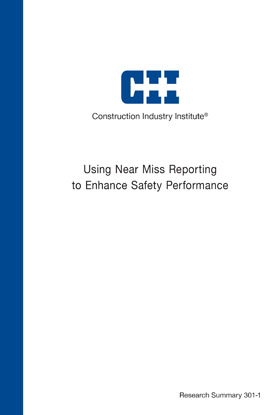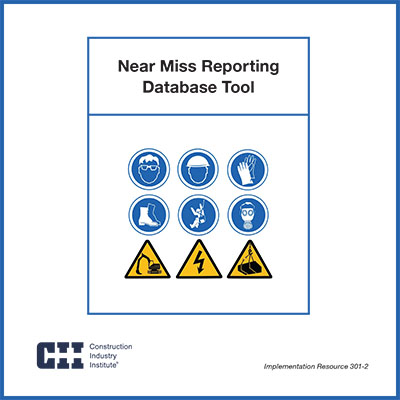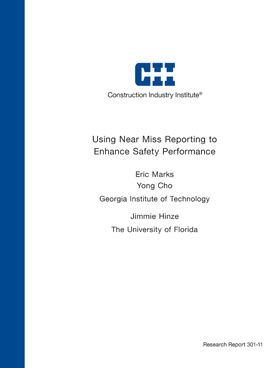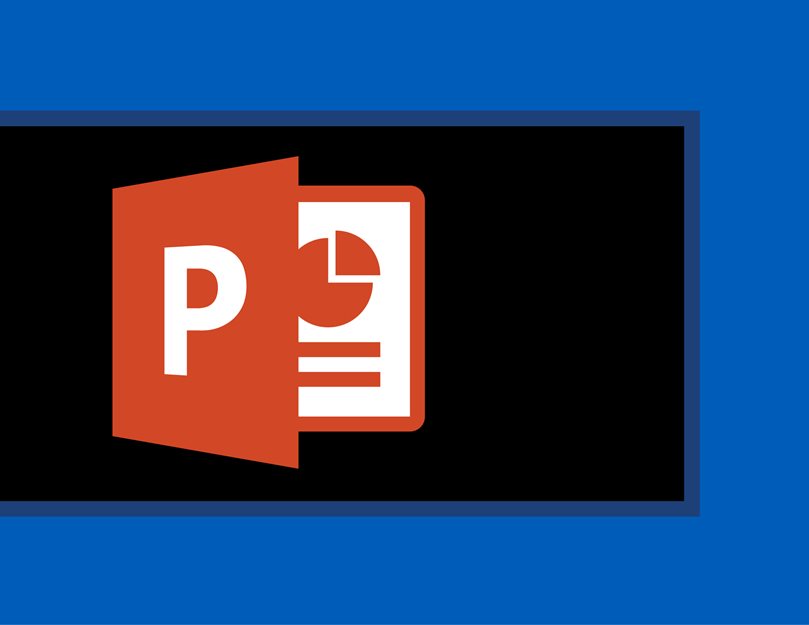
Using Near Miss Reporting to Enhance Safety Performance
In the past decade, construction safety performance has stagnated to the point that only marginal improvements have been achieved. Past safety performance has been driven by lagging indicators, but any improvement in future safety performance will be realized through the effective use of leading indicators. One such metric for worker safety performance is a near miss reporting program. The identification and analysis of near misses helps construction organizations identify hazardous conditions and unsafe work practices before they result in construction accidents. The Construction Industry Institute (CII) established Research Team (RT) 301, Construction Safety, to identify best practices associated with near miss reporting programs.
To do this, the research team performed the following research actions: developed an actionable definition of near misses or non-injury events; investigated ways that near miss reporting can be a positive experience; developed an effective way to collect, analyze, and manage near miss reporting data; and created a tool to improve safety process with near miss data. At the outset, the team examined the many nuances of the various industry definitions of the near miss, considering references to it is as a free lesson, a wake-up call, a learning opportunity, a great catch, an unexpected occurrence, a close call, and so on. The team also assessed effective available means of systematically collecting and applying the information obtained from the near miss data to improve safety performance. The stated research objective answers the essential research question: “How can near miss reporting be used as a tool to help project teams identify gaps, learn from the events, and significantly improve safety performance?” While the research scope was confined to the construction industry, the team also examined the successful use of near miss reporting in other work settings. This review focused on near miss programs from multiple U.S. industry sectors, including the chemical process industry, energy, firefighting, manufacturing, medical, military, and the airline industry. The expectation is that all sectors of the construction industry can benefit from the findings of this research.
The team interviewed a large number of personnel (i.e., safety managers, supervisors, and craft workers) on construction sites with active near miss reporting programs. The team analyzed the data from these interviews, along with the results of its review of other industries’ practices. Using this analysis, the team created a near miss reporting program for a construction company. Components of this program include a near miss definition, a reporting strategy, and a recommended flow of near miss information. It also offers near miss reporting guidelines, an implementation strategy, a near miss information flowchart, a near miss reporting database template, and a program evaluation tool for periodic assessment. To evaluate the program, the team asked several construction firms with active construction sites to implement the program. Periodic interviews with personnel on these sites provided useful suggestions for modification and improvements to the program.
The research results indicate that near miss events and conditions can be reported, analyzed, and mitigated through a near miss reporting program. Near miss reporting was found to lower the OSHA TRIR, increase communication and trust about safety for construction site personnel, and further enable workers to identify hazardous conditions and unsafe worker behavior. For a majority of the participating construction sites, once the near miss reporting program was implemented, the ability to report near misses increased employee motivation to identify and report hazards on construction sites.
Construction companies—specifically construction site personnel—will benefit from this research by learning to identify hazards and reduce workplace risks through near miss reporting. Also, the RT 301 products can enhance a construction company’s safety culture, improve worker morale, and increase worker productivity, all without significantly adding to a project or company budget.



